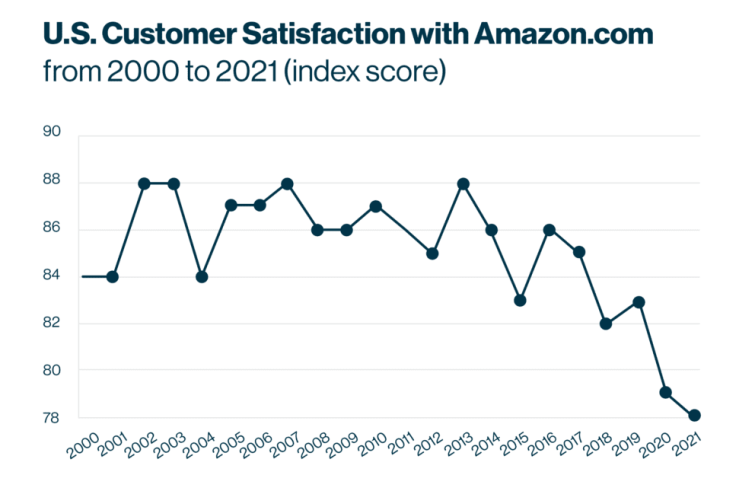The Chain Reaction Behind Retail Supply Chain Disruption

Originally Published to SpauldingRidge.com September 2022
Despite a “peak season,” there is truly no downtime for retail supply chain these days, especially with scenario planning playing such a heavy role in simply keeping the lights on.
Operational management of distribution networks continues to chase consumer shopping patterns and other global influences like inflation hikes and exponentially heightened sustainability initiatives. Seemingly overnight, relentless demand shortages are now flipping to supply surpluses. This is all further complicating the ability of retailers to orient their supply chain networks to constantly shifting behaviors, rules, and regulations.
Consumer behavior evolves; that’s to be expected. The increase in demand for access to goods with a higher degree of service quality is challenging retailers’ ability to define, optimize and execute across the supply chain.
It's highly visible across the industry today — the oversaturation of reporting on the supply chain delays, previously a vague term for anyone outside the industry, is now a common topic of discussion and news for most of the public. Despite general awareness at an all-time high, there still isn’t an appreciation for the complexity of even the simplest supply chain to execute well. Instead, the constant, regular exposure has led to sympathy waning amongst consumers despite the ongoing issues across the economic and geopolitical landscape.

Proactive control of all financial and operational aspects of the supply chain is more crucial than ever to balance the levers that manage capacity, labor, and inbound/outbound volume throughout all of a network’s facilities.
Nodes such as pop-up warehouses, consolidation centers, and additional intermodal hand-offs have been stood up to meet both rising customer and international demands, helping to alleviate throughput and margin challenges. Nari Viswanathan, Senior Director, Coupa Supply Chain, emphasized this, saying "retailers have been pushed to reconsider every aspect of their supply chain including inventory, distribution method, and associated infrastructure."
The big question is: despite all of this, how can retailers strike the right balance of risk that allows for legitimate resiliency?
A great starting point? Addressing the Prime Effect and the exponential demand for ESG efforts.
Consumer influence #1: The prime effect
Although a global epidemic has increased pressure on supply chain activities, the world of supply and demand is no stranger to upheaval.
Most would be hard-pressed to say that anything affected the retail industry more significantly than the "prime effect." Thanks to the introduction of same-day and 2-day delivery, the common consumer has long since discovered that supply chains can now provide goods and services to clients more quickly than ever before.
In certain regions, such as Western Europe, customer willingness to invest in same-day delivery increased by as much as 50% between 2012 and 2020.
Retail supply chain leaders are fighting constant battles in an effort to strike the right inbound and outbound demand balance across their facilities. Considering the highly competitive labor market and associated inflation, one way retailers have counteracted capacity constraints is through automation.
Although fulfillment center automation has been around for decades, the ROI for large-scale implementations has not always made sense because of the astronomical upfront cost required — Amazon’s recent investment cost them $350 million.
Given the recent complications, the answers to the decades-old questions are starting to change. The upfront investment for large scale automation is now table-stakes to keep up — and this is just within the four walls of a warehouse. ‘Four walls’ is now a relative term, as well, with traditional fulfillment diversified using:
- Vendor drop ship
- Direct-to-consumer
- Fulfillment-by-Amazon
Just to name a few.
If we expand to the entirety of a global retail network, similar trends are taking place. Capabilities for continuous design and analysis are non-negotiable for successful service-oriented organizations that aspire to maintain high levels of customer service.
Consumer influence #2: Demand for proof of ESG efforts
Evolving rules and heightened consumer environmental awareness has raised the standard for what it means to be an “eco-friendly” brand. For an ever-growing pool of consumers, finding the ideal balance between price, quality, and service is insufficient, as is merely making a passing reference to environmental protection.
Many consumers have also realized that the “environmentally-friendly” tagline is a marketing term, not an actual promise of environmental and sustainability governance (ESG) efforts, so it can be stamped on anything without regulation.

As a result, any assertions are subject to greater public scrutiny than ever before. The old standby for many organizations of buying carbon offsets is already being repeatedly investigated, with many critical of the actual impact and value.
To fulfill this demand while simultaneously maintaining strong brand perception, ESG is increasingly being considered on a weekly, monthly, and annual basis when making decisions in addition to the typical long-term growth objectives. Many companies have pledged to reach “net zero emissions by 20XX,” including brands like Apple and KitKat.
Adding to the difficulties mentioned, new or refined legal regulations are being mandated to organizations at a quarterly rate and executive orders are requiring businesses to publish public reports more frequently, deepening visibility to topics that were previously not a part of the customer purchasing decision.
The math involved in developing eco-friendly products that are of high quality and clock in at an affordable price doesn’t add up easily — especially when taking into account the impact of external factors on the supply chain. It requires a series of long-term goals, incremental execution, and total oversight of product creation from sourcing of materials all the way through the distribution channels in which they’re sold to customers.
Leveraging technology to reach resiliency
It's easy to see that a variety of factors contribute to the complexity of the global supply chain — it's far more difficult to find a long-lasting, reliable solution.
Will supply chain technology predict the next pandemic? How about the next geo-political event that sends markets reeling and legislation reacting? Not likely. The reality, though, is that resiliency isn’t about predicting the unpredictable and it’s not so much about predicting catastrophes as it is about plotting paths based on a variety of business-pertinent situations.
“It’s a common misconception that companies should design their supply chains based on low probability, high impact events. Operational design of the supply chain and its sensitivity analysis should be based on high-probability, low/medium impact events. Resiliency is essentially being prepared for these events.” says Nari.
Intelligence needs to be housed within the business and be highly accessible so you can design for the known, such as port closures, labor strikes, and modal capacity pinches, and stress test to find breaking points. When the black swan events do inevitably happen, technology needs to provide clear, concise answers to the questions at hand.
How can high-frequency stress-testing and black-swan scenario planning be coupled together in one technology?
Spaulding Ridge x Coupa Supply Chain Design & Planning (Powered by Llamasoft)
Coupa’s Supply Chain Design and Planning solution offers a unique function: the ability to develop a modeling-based digital twin to conduct scenario planning for both upstream and downstream impacts. This 2022 Gartner® Magic Quadrant™ for Supply Chain Planning Solutions also enables organizations to optimize their production, inventory, transportation, and strategic network design.
Scenario planning is the life raft for your business. It’s the emergency plan. It deserves time, attention, and the right technology to create the optimal route that will get your business back to 100% as quickly as possible — especially when volatility doesn’t seem to be slowing down.
Spaulding Ridge is an advisory and implementation firm that specializes in transforming businesses using best-in-cloud technology. Our Supply Chain experts are here to assess, develop a blueprint, implement, and maintain the right technology solution for you and your business.
Have questions? Reach out to Joe Kontak to schedule time to discuss your supply chain.
Special thank you to Nari Viswanathan, Senior Director, Coupa Supply Chain, for your valuable insight on the supply chain and Coupa Supply Chain software.
